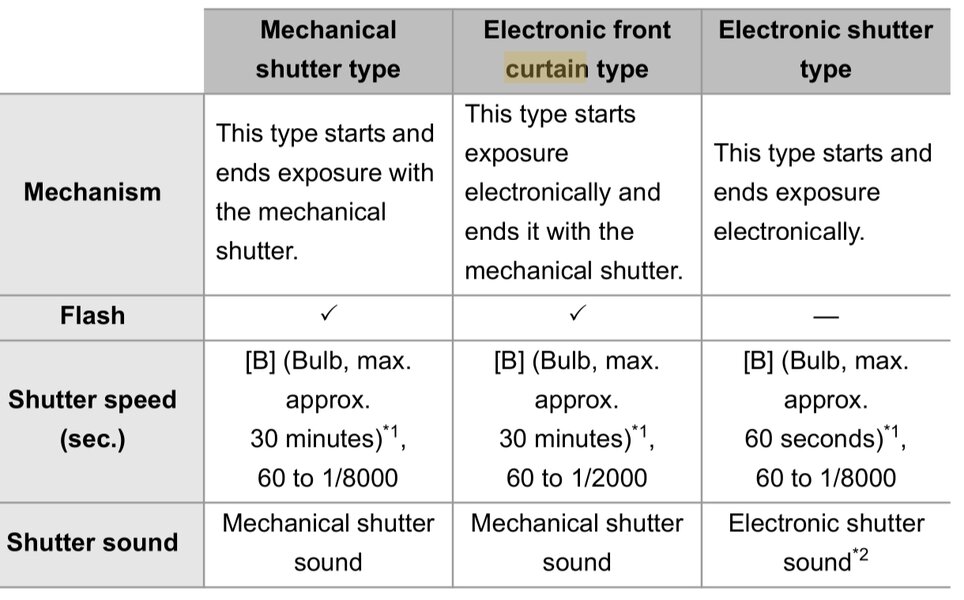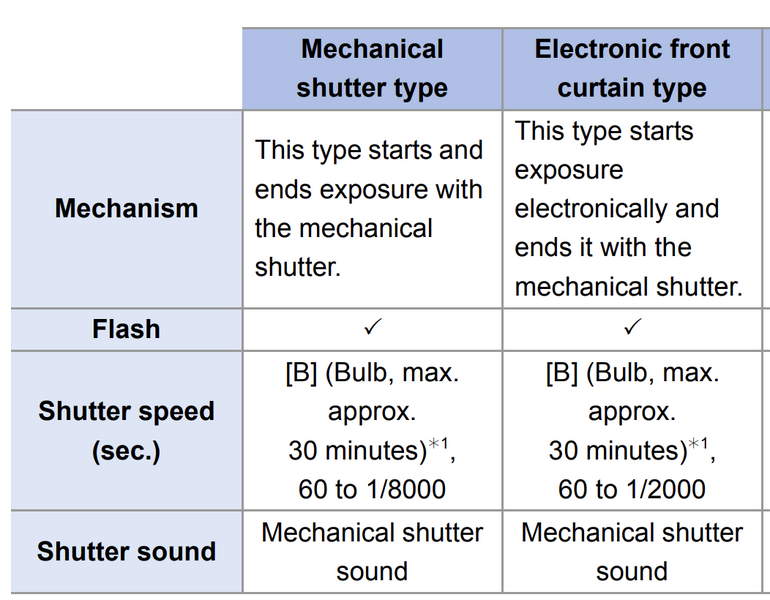I seemingly cannot get this to work no matter what settings I chose and reading the sections in the manual. I can feel the click at the start and the click from the rear curtain. It's also not the most subtle shutter either.
The purpose of EFCS is: "The electronic front curtain type reduces blur caused by the shutter because the amount of vibration from the shutter is small compared to the mechanical shutter type."
From the manual it states "mechanical shutter sound" but I can feel the curtain opening. The same occurs whilst using shutter delay.

"When using APS-C lenses, the electronic front curtain is not available." I am using 24-105 f4 and this has me flummoxed.
Quickly comparing EFCS to MECH the dual-pulse shock at exposure beginning is a lot quicker and lighter... But there is something mechanical still operating. Full ES has zero feel with or without a beep of your choice. I am confused as EFCS should surely be the same as ES followed with the mechanical click of the rear curtain.
I've always put importance on reducing mirror and shutter slap/shake/shock buying a huge heavy (for damping) Arca Swiss monoball for SLR/DSLR for the sharpest possible landscapes (especially long telephoto) back in the day.
The purpose of EFCS is: "The electronic front curtain type reduces blur caused by the shutter because the amount of vibration from the shutter is small compared to the mechanical shutter type."
From the manual it states "mechanical shutter sound" but I can feel the curtain opening. The same occurs whilst using shutter delay.

"When using APS-C lenses, the electronic front curtain is not available." I am using 24-105 f4 and this has me flummoxed.
Quickly comparing EFCS to MECH the dual-pulse shock at exposure beginning is a lot quicker and lighter... But there is something mechanical still operating. Full ES has zero feel with or without a beep of your choice. I am confused as EFCS should surely be the same as ES followed with the mechanical click of the rear curtain.

I've always put importance on reducing mirror and shutter slap/shake/shock buying a huge heavy (for damping) Arca Swiss monoball for SLR/DSLR for the sharpest possible landscapes (especially long telephoto) back in the day.



